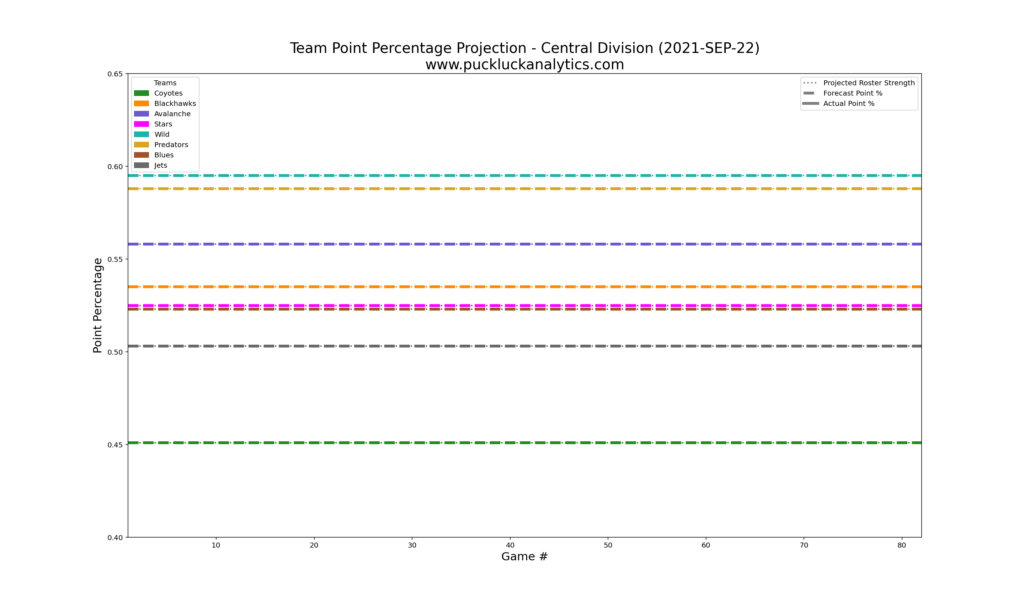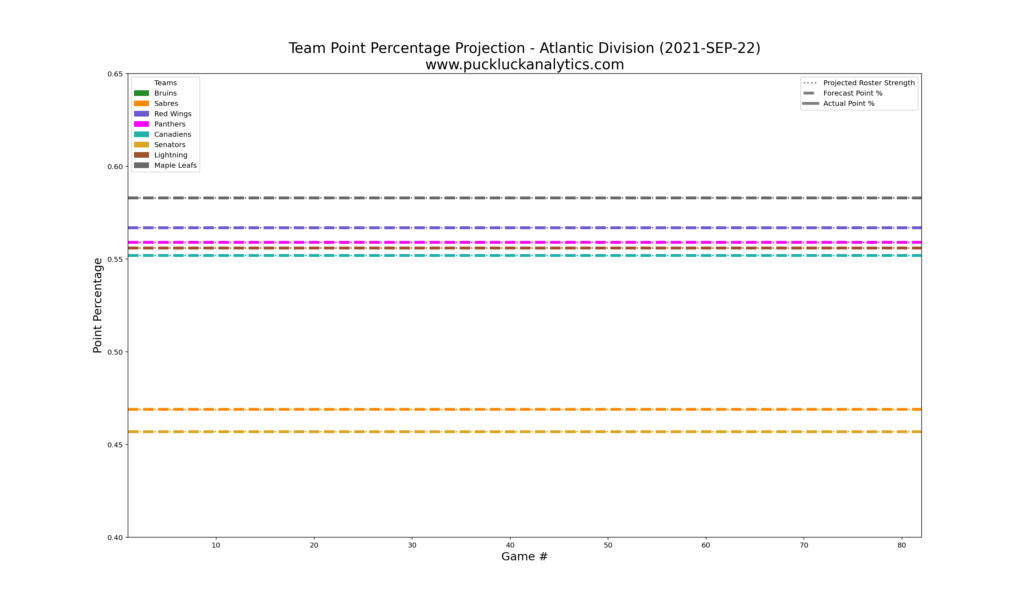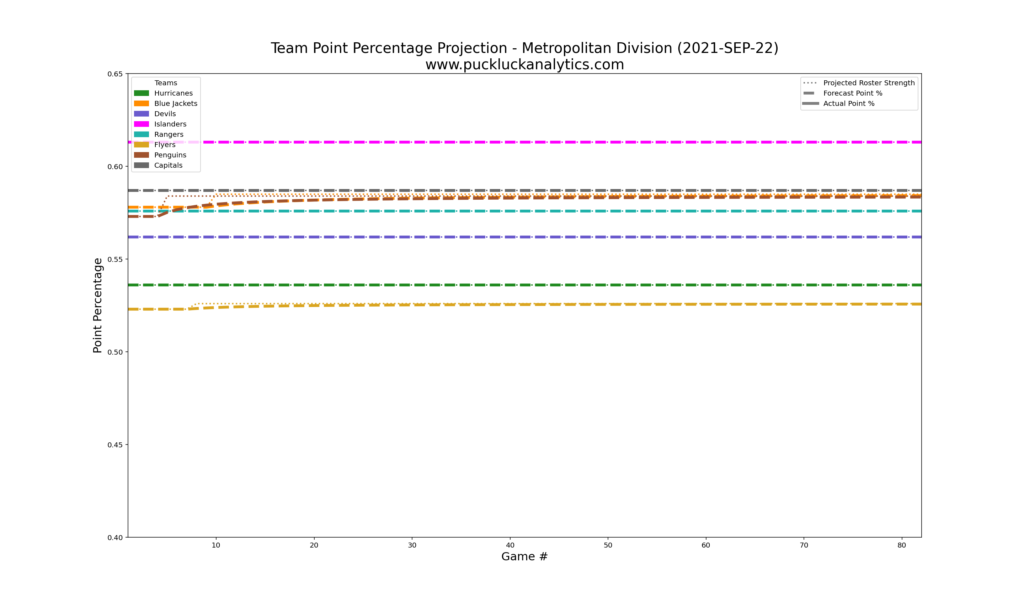As I worked my way through the 2021-2022 season previews for all 32 NHL teams, it was clear that goaltending was having too large an influence in my current set of models, so I set out to find an improved method to forecast team defense. I’ve overhauled the 5v5 defense in my models to give the skaters a larger impact. Let’s walk through the new models, then take a look at the updated 2021-2022 projections.
The Old Way: SA/60 & SV%
In my original team projection model, I used team 5v5 SA/60 and 5v5 SV% to predict team GA/60 as I initially set out to use only counting stats wherever possible. The team stats were estimated by combining player projections for the same stats. While this was a quick and easy method that allowed me to get the initial set of models up and running, it contained an underlying assumption that skaters have no influence on save percentage. We know this isn’t the case, as skaters can affect shot quality in addition to shot quantity. In fact, I’ve delved into this before in this post looking at it from a shooting percentage perspective.
The New Way: xGA/60 & GSAx/60
In the new version of the team projection model, I’ve shifted to using 5v5 expected goals against rate (xGA/60) and 5v5 goals save above expected rate (GSAx/60). While it moves away from my initial desire to use only counting stats as inputs, this allows us to consider both shot quantity and shot quantity effects on team defense.
Team xGA/60 is estimated using the same method that SA/60 was previously, by combining individual player projections weighted for ice time. Player projections for xGA/60 also followed the same method as SA/60, using a regression model with the past three seasons of NHL data as input. The process for goaltending is the same, projecting GSAx/60 for each goaltender and combining for team results based on number of starts.
Impact to Team Projections
Generally, the impact to team projections is relatively small and doesn’t change the divisional projected standings in most cases. We do see larger improvements for teams that have good team defense such as Boston, Calgary, Colorado and the New York Islanders.
Updated 2021-2022 Projections
The full set of 2021-2022 projections have been updated based on the new model. While offensive impacts have not changed, player net impacts have changed as a result of the change to the defensive side of the model. The updated point projections are below and can also be found here, along with links to the divisional pages with updated roster plots for each team. The point projections will be updated regularly on the main 21/22 season projections pages.



